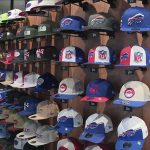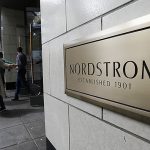Billabong International Limited nearly halved its guidance on EPS growth for fiscal 2008-09 to 6% to 10% due to further deterioration in consumer sales, primarily in the United States.
The softness, which is being seen at both the wholesale and company-owned retail levels, particularly in the US, has accelerated throughout November, the company said. In response, Billabond is revising its full year guidance to a range of 6% to 10% earnings per share (EPS) growth, down from the previously forecast 12% to 16% EPS growth
provided at the time of the Companys Annual General Meeting in October 2008.
This assumes a revised annual average exchange rate of 75 cents for the AUD/USD and an unchanged 55 cents for the AUD/Euro. The company has taken the view that the weaker than anticipated conditions are likely to extend well into the financial year. While forward orders remain good, some retailers have requested shipments to be delayed. Additionally, repeat business in November was weaker than anticipated. In the face of deep discounting within sections of the industry Billabong, wherever possible, is retaining its regular pricing
strategy. This has impacted sales, but is essential to the maintenance of brand equity.
At a regional level, sales growth within Europe has eased slightly, Australia remains relatively subdued and margins are being pressured in South Africa following a steep depreciation in the Rand versus the USD. Sales remain strong in some markets including South America, Japan and greater Asia. In addition to this, the dramatic weakening of currencies including the Canadian dollar versus the USD and the British
pound versus the Euro is having an adverse impact on the companys regional results.
In response to current conditions, the company continues to scrutinize and reduce costs, manage receivables and inventory levels across all regions and closely monitor and review both small and large accounts.
The revised guidance implies full year sales growth in excess of 25% and EBITDA growth in the vicinity of 20%. The difference between forecast EBITDA growth and forecast EPS growth relates primarily to higher depreciation and amortisation and higher interest costs, primarily relating to borrowings for recent acquisitions.
Much of the impact from the deterioration in trading conditions is likely to be seen in the companys first half results. The company anticipates it will deliver negative EPS growth for the six months to Dec. 31, 2008, given it will include only relatively minor benefits from currency and will reflect a compression of EBITDA margins as softer than anticipated sales have not been matched in the short term by reductions in both wholesale and retail overheads. The second half is expected to be significantly
stronger given it is the larger selling season in the Northern Hemisphere, will include a full six months contribution from the recently acquired DaKine brand and will reflect a realignment in both wholesale and retail overheads to restore EBITDA margins. The second half is also expected to deliver significant currency benefits, with the companys currency assumptions implying an average AUD/USD exchange rate of 71 cents for the seven months to 30 June 2009.
The new guidance, together with each of the above assumptions, assumes the absence of any further exceptional, unforeseen circumstances and, in particular, any further significant deterioration in the US retail market.









